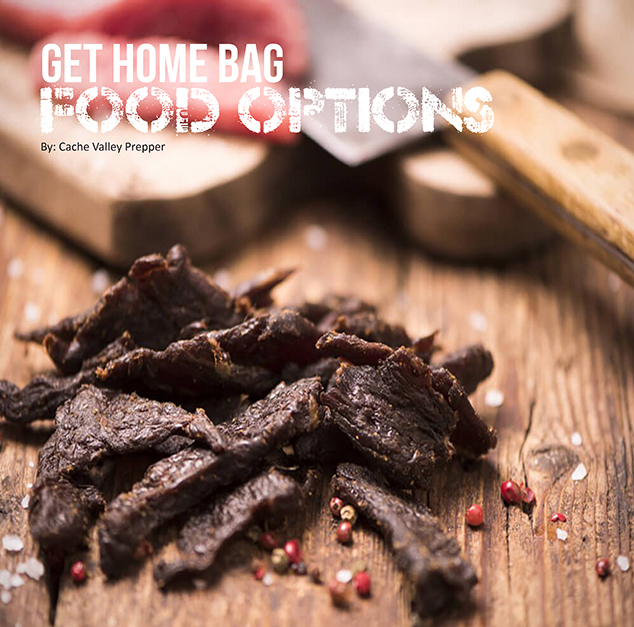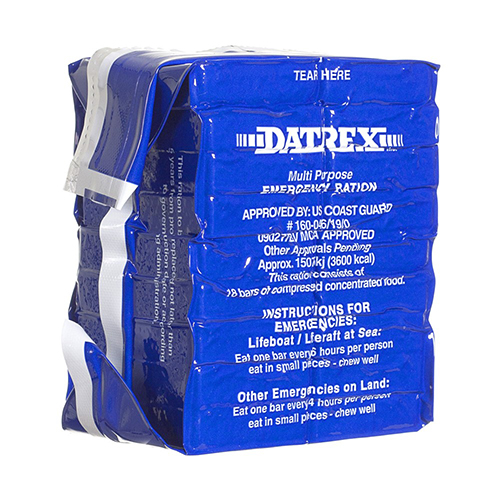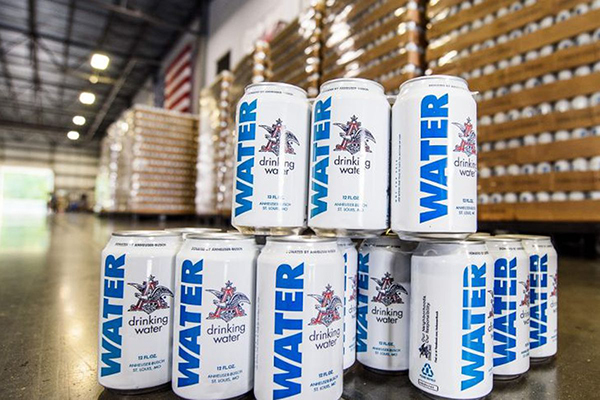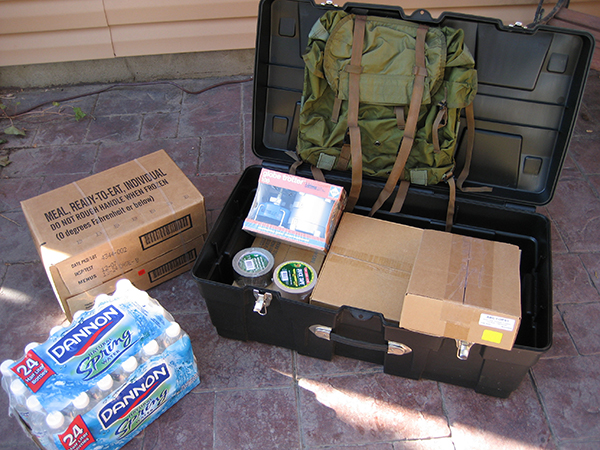
I ate nothing but military issue MREs for over six months straight. Contrary to all the urban myths, I suffered no ill effects. I actually got so used to them, I didn’t want to quit cold turkey. I figured I’d never want to see one again but I stand corrected. Don’t believe everything you hear about survival foods.

If hungry enough, you’ll eat just about anything. I can see how most folks could get squeamish though. Americans have it pretty good in the food department and most probably don’t know what it’s like to be truly hungry for more than a day or two at most. I do, and it just gnaws at you. I came back so thin from one trip overseas that my mom burst into tears when she saw me. But it really is not that bad eating a whole lot less than you’re used to once adjusted.
For a short get home run, it’s often best to travel fast and light. I keep a few Cliff Bars rotating through my EDC bag for those situations. However, there are times when more calories are needed to keep moving.
Vehicle-Friendly Foods
Get Home Bags (GHB) are typically carried in vehicles that are exposed to very high temperatures in summer and freezing in winter. That puts food, water, and their containers through the wringer. Add the effects of bouncing around behind the seat of a truck or in the trunk of a car and you’re dealing out more punishment than most options can take.
Low Moisture Options
Low moisture is the key to storing food longer without frequent rotation in the heat of a vehicle interior in summer. This means lifeboat type rations are an important option for vehicle based food storage. The bars also require no preparation or hot water which means they can be eaten on the trail.

The main deficiency of these rations is that they are mostly low in protein and that’s going to leave you feeling hungry. It’s low for a purpose because protein provokes thirst and requires more water intake to digest. The lack can be solved by supplementing protein, provided you have enough water to drink. This can be accomplished by adding a little meat to your diet by rotating jerky or peanut butter, foraging, or adding a low-moisture protein product like SurvivAMINO tablets.
- Food Packet, Survival, General Purpose, Improved – These military rations are hard to come by for most folks, but I managed to hang onto a couple cases. I use these rations by themselves or break them down and use as components in my own design. The military designed them to last 5 years at 80 degrees Fahrenheit, but I’m pretty sure that most will still be edible if an archaeologist digs one up in a couple of hundred years. Each ration contains 6 compressed bars: 2 cereal bars (granola and corn flakes), 3 cookie bars (typically two shortbread and one chocolate chip), and 1 sucrose bar (which is a pack of wintergreen tablets or Charms candies). It also has a lemon tea packet and an Herb-ox chicken soup and gravy base. The soup base will probably be the first thing to go bad by about 100 years, but is a very multi-use item in a survival situation. Like every US military ration, they also have the requisite chewing gum. Most of the items are mil-packed and in a water resistant paperboard box.
Each packet provides 1447 kilocalories (5% protein, 39% fat, and 56% carbohydrate). It’s designed to provide a maximum of 8% of the calories from protein to minimize metabolic water requirements. This means you can eat it even if low on water. As far as taste goes, I think the shortbread bars are by far the best tasting of any of the low moisture rations and the candies are a good pick me up. The soup and gravy base is Herb-ox brand chicken bouillon that is useful for creating hot soups, stews, gravy, and seasoning any meat you happen across. That may seem like a minor point, but I actually use it as a benchmark to gauge the experience of wilderness survival students.By the time a student eats unsalted and unseasoned meat a couple of times, some salt or seasoning or a bullion packet will make its way into their pocket survival kit. Choose flat packets because they pack better than cubes. It separates out the newbies from the intermediate students until they learn to season their food with wild edibles. As low moisture survival foods go, these rations are a good place to start if you can find them. Just keep searching.
- Millennium Bars – Of the commercial rations, I think these are the best tasting … which isn’t that great, but they sure are appetizing looking at the wrapper. You won’t be putting on any weight eating these, but they come in a variety of flavors which is more than I can say for the other type of rations like this that I’ve tried. They come in 400 calorie bars which is a plus because you can mix and match flavors. This makes them a little less boring than only having a single flavor like the other commercial bars.
- Mainstay – These are a sweet vanilla lemon cookie tasting ration that gets boring before you finish the first segment. It’s still better than a lot of things I’ve eaten on survival trips. They come in a solid brick that’s scored to break into 400 calorie portions to ration for meals. This often leads to crumbling, but these really do last a long time. I ate one after over 6 years of being bounced around in my truck across various Arizona deserts and it was still more or less edible.
- Datrex – Also boring tasting but crumbly coconut. These 200 calorie segments are wrapped, so they’re easy to separate and divide into portions.
- Charms Candies – I’ll toss these in because the military includes them in some of the parachute and lifeboat kits. I also include them in pocket kits. Two packages of Charms provides ten servings of 2 candies each. They’re straight sugar and carbs. That fact plus hard candy stores well is probably why they’re a good survival food. Two pieces of Charms candies gives you 20 calories. So that’s 200 calories for two packs which makes them a calorie-dense food source. Charms candies are also great for morale. The world may be going sideways around you but at least your mouth will happy. Plus you’ll get a quick shot of sugar to help fight off hypothermia and move you down that trail towards home. If your grocer doesn’t have them, Amazon does.
Beverages
When it comes to water, you should fill your belly and then the canteen. Staying hydrated keeps the weight off and you don’t want to go into a survival scenario already in the early stages of dehydration. Your body can’t thermoregulate unless it has enough water. As your body gets low on water, blood volume begins to drop and it won’t end well for you if it drops too low. So drink your fill at each water source and carry a water bottle or canteen.
Canned Water

In my vehicles, I prefer to carry canned water. It’s heavy but that doesn’t matter when your vehicle is carrying the weight. Canned water stores forever, light cannot penetrate it, and the cans are filled so that they won’t burst when frozen. If my car can go no further, I’ll cache anything not taken with me and use the canned water to fill the water bladder and bottles in my pack.
Drink Packets
Water is great but a get home situation can be anything from a short jog to a marathon to an overland trek. Who knows what you’ll encounter between A and B. I learned a thing or two about water and heat exhaustion growing up in the Arizona desert.
One thing I learned is that you can only drink so much water when a survival situation pushes your limits in the heat. Then you hit a point of electrolyte imbalance. Symptoms vary but for me, I was thirsty with no amount of warm water satisfying my thirst. If I drank one more swallow, I would vomit. At this point you’re close to becoming a heat casualty. You need salts and electrolytes or water won’t stay down or worse.Salt tablets are good to keep in a pocket survival kit because they take up so little room. However, they don’t contain all the electrolytes your body will be craving. Scaling up to my first aid kit, I carry a rice based electrolyte replacement powder called CeraLyte. Being rice based, it has added benefits when the patient also has diarrhea. This is another common survival ailment that can worsen dehydration in a hurry. Sports drink powders like Gatorade or the carbohydrate electrolyte beverage powders that come in MREs may not be optimal, but they will also work.
Cocoa
Hot cocoa can be prepared using an MRE heater and hot beverage bag, which are also multi-use items. Hot and sugary drinks are a morale booster. It’s also a way to restore fine motor coordination to cold hands, warm up the body, and get some calories into the body.
Caching
Caching is one of my favorite expressions of preparedness. You shouldn’t keep all your eggs in one basket, even if you watch that basket like a hawk. Caching means that if your house burns down, you wouldn’t lose everything. Having a little something stashed away for a rainy day is a good thing.
Travel Caches

Having caches along get home routes, bug out routes, and other travel routes gives the survivalist the ability to resupply as needed. It will allow you to travel fast and light. This is important as it’s about the miles traveled and not about living out of a huge pack for the foreseeable future.
Travel caches are something survivalists need a lot of, so it’s best to keep them small and inexpensive. Plus keep them simple and crank out a bunch at one time. Keep just a few days worth of basic supplies in each cache. My favorite for this kind of cache is Mountain House Pro-Paks of freeze dried foods. My preference is to use the LRP/CW (Long Range Patrol/Cold Weather) meals in situations where I’m carrying a large pack. They pack double the protein, more calories, and are mil-packed into cubes that pack better. Since these are going to be cached, the shape doesn’t matter that much. Two portion Mountain House meals are cheaper than LRPs. The entrées of the LRPs are made by Mountain House anyway.

I’ve eaten a lot of backpacking meals over the years with my preference being for the taste and menu of Mountain House. Freeze dried meals will store for thirty years or more if stored at a constant temperature. Caches will last a very long time if properly packed, then buried or submerged. Don’t combine liquid or non-food items into food caches that could leak and impart undesirable chemicals, tastes or smells.
The drawback is that freeze dried foods require a runner or hiker to stop and prepare hot water. It’s important to balance freeze dried foods with low moisture foods like trail mix that can be eaten without stopping.
Native American Get Home Caching Adaptations
Other cache locations can include homes, storage, or land belonging to friends or family along get home routes. Apache tribes used caching techniques to travel fast and light, resupplying along the way at the homes of aunts, uncles, cousins, and partisans. These techniques enabled Apache war parties to repeatedly embarrass the US military over the longest war the US fought that lasted several generations.
The Hohokam were an ancient Native American culture that sent runners long distances. They went from the valley where the Phoenix metro area is located today, down to the Gulf of California in Mexico to trade. Runners were very lightly equipped, carrying a leather boil bag into which hot stones were placed to boil the water and reconstitute dried foods. This was much like backpackers do today, only lighter. Archeological evidence of the long trade routes used by the Hohokam includes obsidian cores from Idaho, shells and parrot feathers from Mexico.
Final Thoughts
Low moisture foods like survival and lifeboat rations store for 5 years or more in a vehicle, while an MRE entrée may not last a single summer in southern states. Electrolyte replacement drink powders can bring exhausted travelers back into balance for hydration. Food caches near routes of travel enable safe, fast, and light travel while minimizing weight carried.
